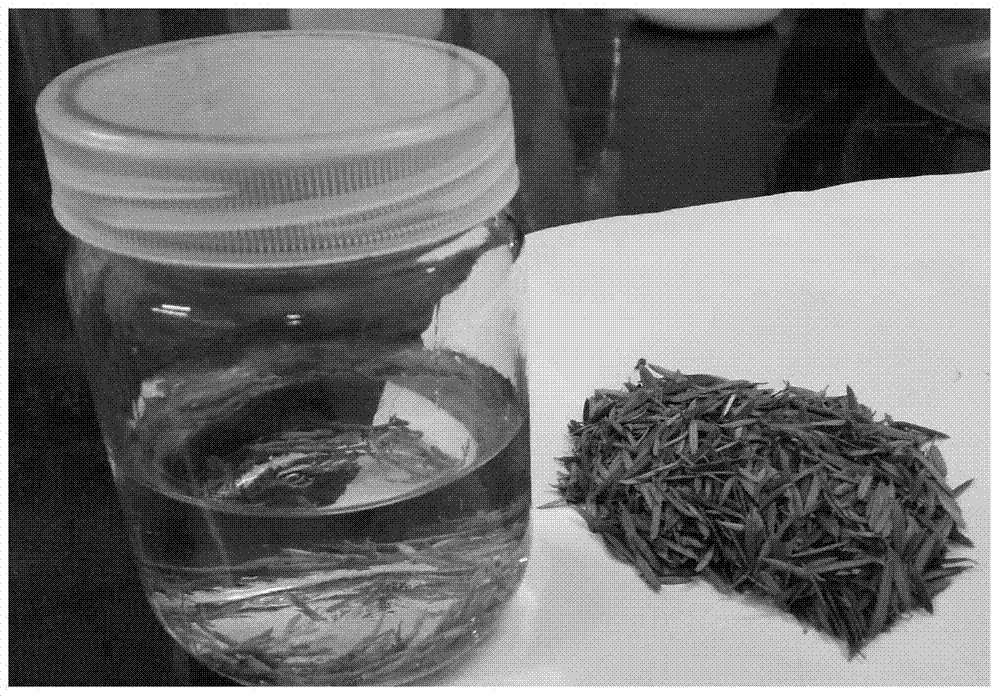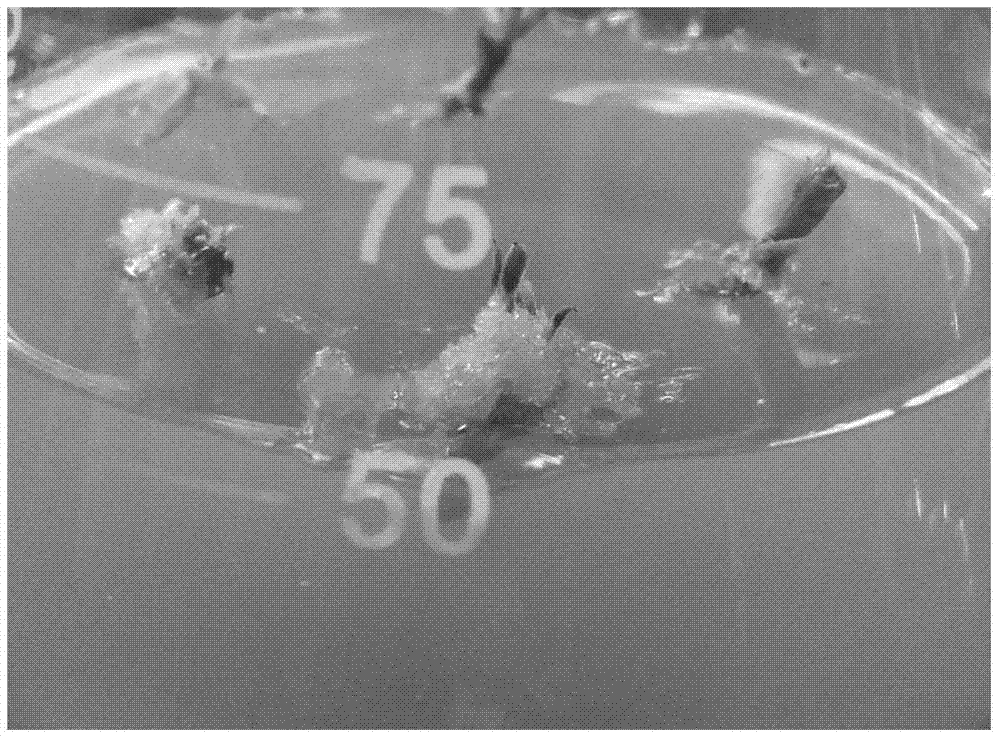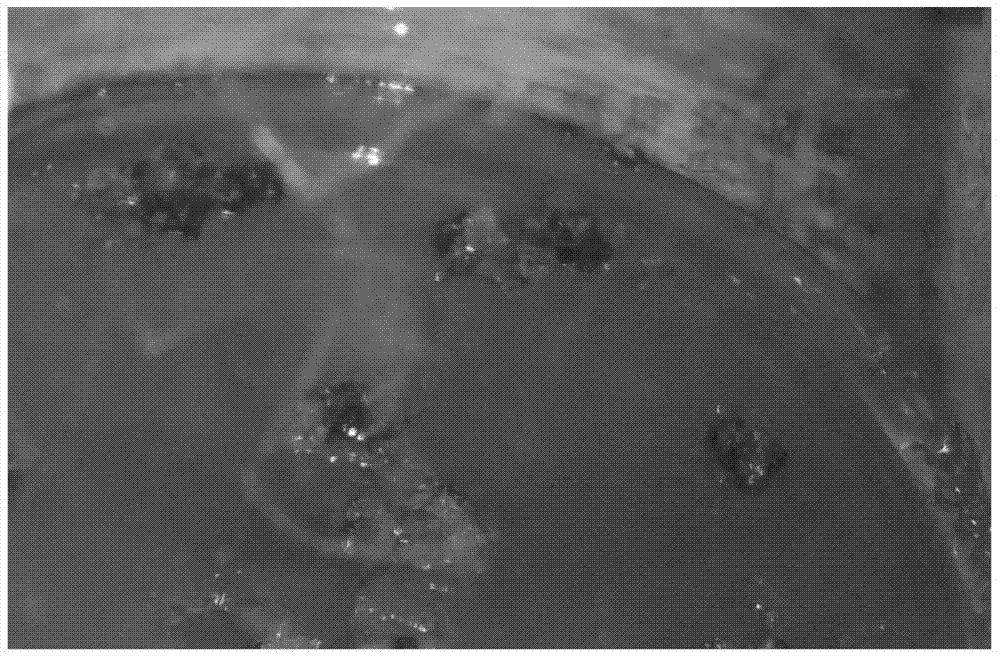De-browning method of browned calluses of taxus cuspidata
A callus, yew technology, applied in horticultural methods, botanical equipment and methods, horticulture, etc., can solve the problem that yew resources cannot meet the demand for paclitaxel production, and achieve sustainable callus growth, browning and other problems. High chemical removal rate and the effect of solving browning
- Summary
- Abstract
- Description
- Claims
- Application Information
AI Technical Summary
Problems solved by technology
Method used
Image
Examples
Embodiment 1
[0029] (1) Disinfection of explants
[0030] Get the stem section of Taxus chinensis that was born in the same year, carry out aseptic treatment, and obtain the explant of the stem section of Taxus chinensis aseptic for subsequent use;
[0031] (2) Callus induction culture
[0032] Inoculate the sterilized Taxus explants obtained in step (1) on the induction medium, culture in dark at a controlled temperature of 18°C, and obtain callus after induction culture after 15 days;
[0033] The formula of described induction medium is specifically calculated according to per liter:
[0034] 3792mg KNO 3 , 15mg MnSO 4 ·H 2 O, 225mg CaCl 2 2H 2 O, 56 mg Na 2 EDTA·2H 2 O, 0.37mg CoCl 2 .6H 2 O, 0.39 mg CuSO 4 ·5H 2 O, 201mg (NH4) 2 SO 4 , 3mgZnSO 4 ·7H 2 O, 3.0mg NAA, 41.8mg FeSO 4 ·7H 2 O, 15mg VB1, 0.38mg NaMoO 4 .2H 2 O, 3.5mg IAA, 4.5mg H 3 BO 3 , 1.5mg Niacin, 220mg NaH 2 PO 4 .H 2 O, 1.5mg KI, 300mg Vc, 370mg MgSO 4 ·7H 2 O, 1.5mg VB 6 , 268.56mg inosito...
Embodiment 2
[0043] (1) Disinfection of explants
[0044] Get the stem section of Taxus chinensis that was born in the same year, carry out aseptic treatment, and obtain the explant of the stem section of Taxus chinensis aseptic for subsequent use;
[0045] (2) Callus induction culture
[0046] Inoculate the sterilized yew explants obtained in step (1) on the induction medium, culture in dark at a controlled temperature of 22°C, and obtain callus after induction culture after 15 days;
[0047] The formula of described induction medium is specifically calculated according to per liter:
[0048] 3792mg KNO 3 , 15mg MnSO 4 ·H 2 O, 225mg CaCl 2 2H 2 O, 56 mg Na 2 EDTA·2H 2 O, 0.37mg CoCl 2 .6H 2 O, 0.39 mg CuSO 4 ·5H 2 O, 201mg (NH4) 2 SO 4 , 3mgZnSO 4 ·7H 2 O, 3.0mg NAA, 41.8mg FeSO 4 ·7H 2 O, 15mg VB1, 0.38mg NaMoO 4 .2H 2 O, 3.5mg IAA, 4.5mg H 3 BO 3 , 1.5mg Niacin, 220mg NaH 2 PO 4 .H 2 O, 1.5mg KI, 300mg Vc, 370mg MgSO 4 ·7H 2 O, 1.5mg VB 6 , 268.56mg inositol,...
Embodiment 3
[0057] (1) Disinfection of explants
[0058] Get the stem section of Taxus chinensis that was born in the same year, carry out aseptic treatment, and obtain the explant of the stem section of Taxus chinensis aseptic for subsequent use;
[0059] (2) Callus induction culture
[0060] Inoculate the sterilized Taxus chinensis explants obtained in step (1) on the induction medium, culture in dark at a controlled temperature of 19°C, and obtain callus after induction culture after 15 days;
[0061] The formula of described induction medium is specifically calculated according to per liter:
[0062] 3792mg KNO 3 , 15mg MnSO 4 ·H 2 O, 225mg CaCl 2 2H 2 O, 56 mg Na 2 EDTA·2H 2 O, 0.37mg CoCl 2 .6H 2 O, 0.39mg CuSO 4 ·5H 2 O, 201mg (NH4) 2 SO 4 , 3mgZnSO 4 ·7H 2 O, 3.0mg NAA, 41.8mg FeSO 4 ·7H 2 O, 15mg VB1, 0.38mg NaMoO 4 .2H 2 O, 3.5mg IAA, 4.5mg H 3 BO 3 , 1.5mg Niacin, 220mg NaH 2 PO 4 .H 2 O, 1.5mg KI, 300mg Vc, 370mg MgSO 4 ·7H 2 O, 1.5mg VB 6 , 268.56m...
PUM
 Login to View More
Login to View More Abstract
Description
Claims
Application Information
 Login to View More
Login to View More - R&D
- Intellectual Property
- Life Sciences
- Materials
- Tech Scout
- Unparalleled Data Quality
- Higher Quality Content
- 60% Fewer Hallucinations
Browse by: Latest US Patents, China's latest patents, Technical Efficacy Thesaurus, Application Domain, Technology Topic, Popular Technical Reports.
© 2025 PatSnap. All rights reserved.Legal|Privacy policy|Modern Slavery Act Transparency Statement|Sitemap|About US| Contact US: help@patsnap.com



